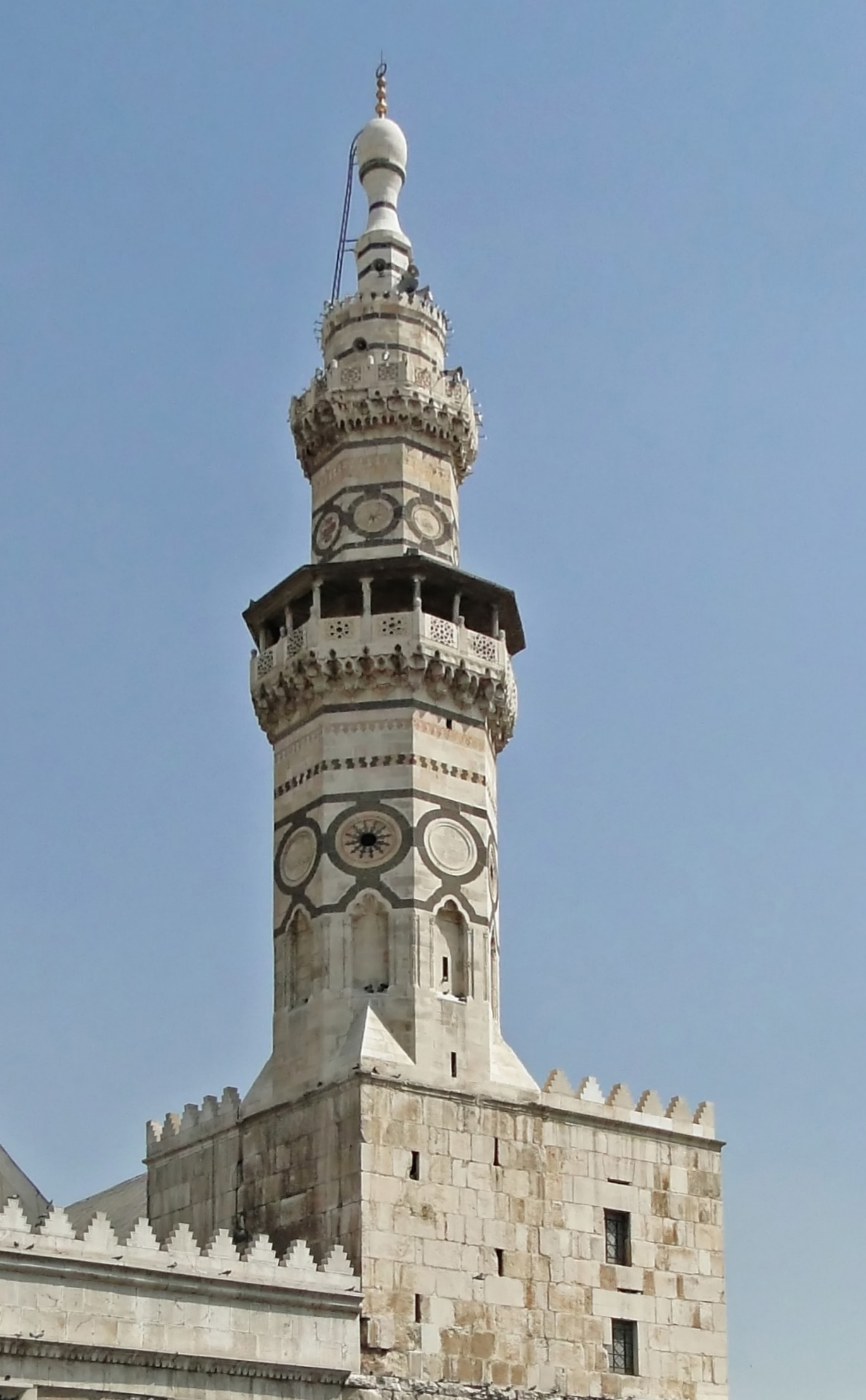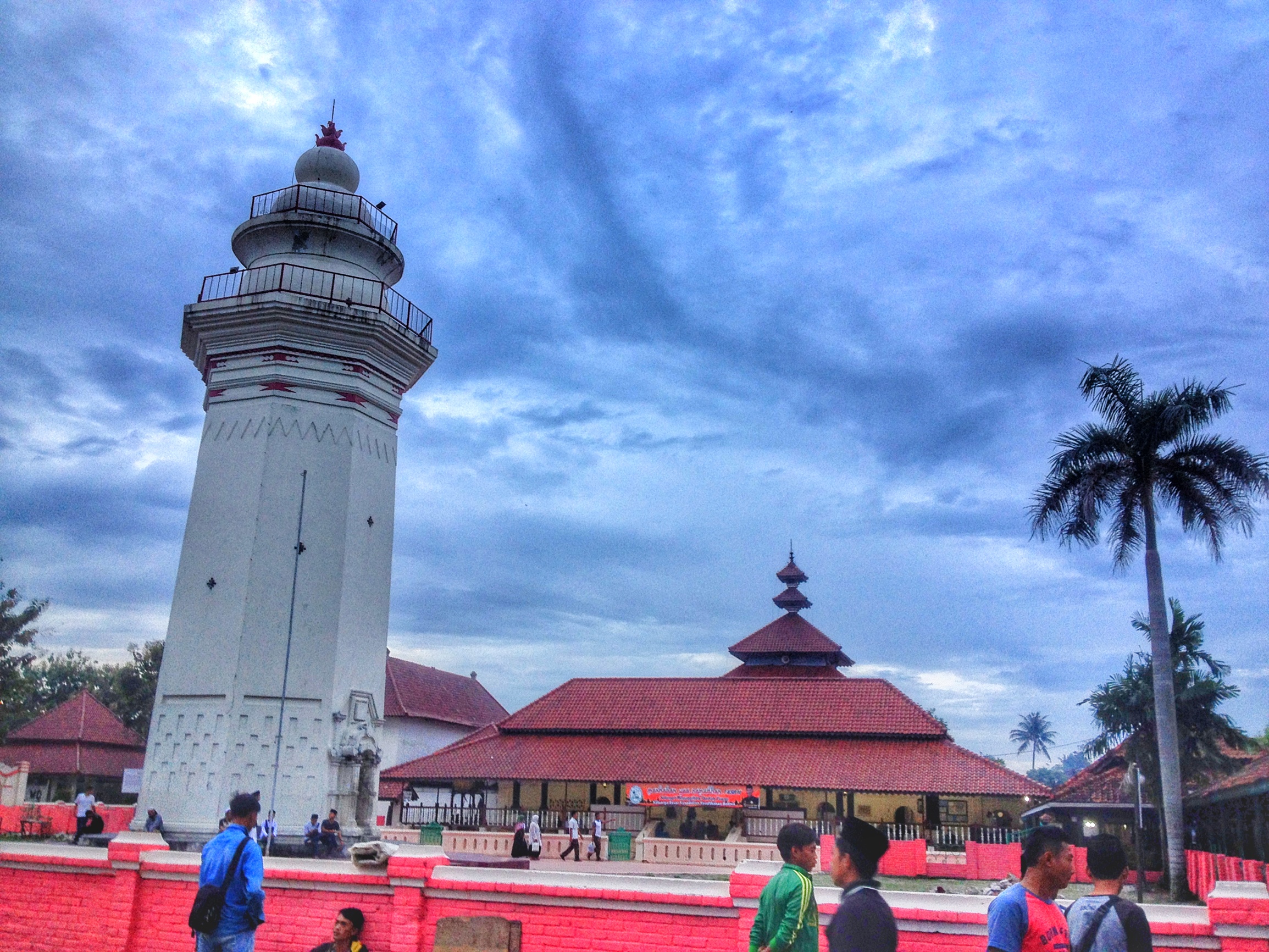|
Great Mosque Of Malang
The Great Mosque of Malang is a mosque located in Malang, Indonesia. The mosque was built in 1890 and completed in 1903. The mosque is square-shaped, constructed with steel, and has a tajug (pyramid shaped rooftop ornament) on top. The original building is still maintained today. History The Great Mosque of Malang was established in 1890 on the land of the Goepernemen or state owned land of around 3,000 square meters. According to the existing inscriptions, the mosque was built in two stages. The first stage began in 1890, then the second stage began on 15 March 1903, and was completed on 13 September 1903. The building is a square-shaped steel structure with tajug roof on top, and although until now the original building is still maintained, the serambi (front porch) of the building was heavily altered, concealing the original architecture of the mosque just behind it. Architectural style From its shape, the Great Mosque of Malang contains two architectural styles, name ... [...More Info...] [...Related Items...] OR: [Wikipedia] [Google] [Baidu] |
Malang
Malang (; ) is a landlocked city in the Indonesian province of East Java. It has a history dating back to the age of Singhasari Kingdom. It is the second most populous city in the province, with a population of 820,043 at the 2010 Census and 843,810 at the 2020 Census.Badan Pusat Statistik, Jakarta, 2021. Its surrounding (the metropolitan area) is home to 3,663,691 inhabitants in 2010, spread across two cities and 22 districts (21 in Malang Regency and one in Pasuruan Regency). Malang is the third largest city by economy in East Java, after Surabaya and Kediri, with an estimated 2016 GDP at Rp. 44.30 trillion. The city is well known for its mild climate. During Dutch colonization, it was a popular destination for European residents. Even now, Malang still holds its position as a popular destination for international tourists. Malang keeps various historical relics. This city keeps relics of the Kingdom of Kanjuruhan period until the Dutch period. The existence of Dutch h ... [...More Info...] [...Related Items...] OR: [Wikipedia] [Google] [Baidu] |
Minaret
A minaret (; ar, منارة, translit=manāra, or ar, مِئْذَنة, translit=miʾḏana, links=no; tr, minare; fa, گلدسته, translit=goldaste) is a type of tower typically built into or adjacent to mosques. Minarets are generally used to project the Muslim call to prayer ('' adhan''), but they also served as landmarks and symbols of Islam's presence. They can have a variety of forms, from thick, squat towers to soaring, pencil-thin spires. Etymology Two Arabic words are used to denote the minaret tower: ''manāra'' and ''manār''. The English word "minaret" originates from the former, via the Turkish version (). The Arabic word ''manāra'' (plural: ''manārāt'') originally meant a "lamp stand", a cognate of Hebrew ''menorah''. It is assumed to be a derivation of an older reconstructed form, ''manwara''. The other word, ''manār'' (plural: ''manā'ir'' or ''manāyir''), means "a place of light". Both words derive from the Arabic root ''n-w-r'', which has a mea ... [...More Info...] [...Related Items...] OR: [Wikipedia] [Google] [Baidu] |
Mosques In East Java
A mosque (; from ar, مَسْجِد, masjid, ; literally "place of ritual prostration"), also called masjid, is a place of prayer for Muslims. Mosques are usually covered buildings, but can be any place where prayers (sujud) are performed, including outdoor courtyards. The first mosques were simple places of prayer for Muslims, and may have been open spaces rather than buildings. In the first stage of Islamic architecture, 650-750 CE, early mosques comprised open and closed covered spaces enclosed by walls, often with minarets from which calls to prayer were issued. Mosque buildings typically contain an ornamental niche (''mihrab'') set into the wall that indicates the direction of Mecca ('' qiblah''), ablution facilities. The pulpit (''minbar''), from which the Friday ( jumu'ah) sermon ('' khutba'') is delivered, was in earlier times characteristic of the central city mosque, but has since become common in smaller mosques. Mosques typically have segregated spaces for me ... [...More Info...] [...Related Items...] OR: [Wikipedia] [Google] [Baidu] |
Buildings And Structures Completed In 1903
A building, or edifice, is an enclosed structure with a roof and walls standing more or less permanently in one place, such as a house or factory (although there's also portable buildings). Buildings come in a variety of sizes, shapes, and functions, and have been adapted throughout history for a wide number of factors, from building materials available, to weather conditions, land prices, ground conditions, specific uses, prestige, and aesthetic reasons. To better understand the term ''building'' compare the list of nonbuilding structures. Buildings serve several societal needs – primarily as shelter from weather, security, living space, privacy, to store belongings, and to comfortably live and work. A building as a shelter represents a physical division of the human habitat (a place of comfort and safety) and the ''outside'' (a place that at times may be harsh and harmful). Ever since the first cave paintings, buildings have also become objects or canvasses of much artist ... [...More Info...] [...Related Items...] OR: [Wikipedia] [Google] [Baidu] |
Mosques Completed In 1903
A mosque (; from ar, مَسْجِد, masjid, ; literally "place of ritual prostration"), also called masjid, is a place of prayer for Muslims. Mosques are usually covered buildings, but can be any place where prayers (sujud) are performed, including outdoor courtyards. The first mosques were simple places of prayer for Muslims, and may have been open spaces rather than buildings. In the first stage of Islamic architecture, 650-750 CE, early mosques comprised open and closed covered spaces enclosed by walls, often with minarets from which calls to prayer were issued. Mosque buildings typically contain an ornamental niche (''mihrab'') set into the wall that indicates the direction of Mecca (''qiblah''), ablution facilities. The pulpit (''minbar''), from which the Friday (jumu'ah) sermon (''khutba'') is delivered, was in earlier times characteristic of the central city mosque, but has since become common in smaller mosques. Mosques typically have segregated spaces for men and w ... [...More Info...] [...Related Items...] OR: [Wikipedia] [Google] [Baidu] |
List Of Mosques In Indonesia
This is a list of mosques in Indonesia. The Indonesian term ''Masjid Agung'' is translated as "Great Mosque", while ''Masjid Raya'' is translated as "Grand Mosque." ''Masjid Keramat'' is translated as "Holy Mosque." ''Masjid Jami'' is translated as Jami Mosque which refers to the congregational mosque where the weekly Friday prayer takes place. These lists only include notable mosques. List of mosques in Indonesia As of 2020, a government team led by Fakhry Affan has registered 554,152 mosques in Indonesia. This consists of 258,958 congregational mosques and 295,194 small mosques which fit 40 people or fewer. The government estimates total number of mosques at more than 740,000 nationwide.Indonesia's 'mosque hunters' count them up one at a time ''Bangko ... [...More Info...] [...Related Items...] OR: [Wikipedia] [Google] [Baidu] |
Teak
Teak (''Tectona grandis'') is a tropical hardwood tree species in the family Lamiaceae. It is a large, deciduous tree that occurs in mixed hardwood forests. ''Tectona grandis'' has small, fragrant white flowers arranged in dense clusters (panicles) at the end of the branches. These flowers contain both types of reproductive organs (perfect flowers). The large, papery leaves of teak trees are often hairy on the lower surface. Teak wood has a leather-like smell when it is freshly milled and is particularly valued for its durability and water resistance. The wood is used for boat building, exterior construction, veneer, furniture, carving, turnings, and other small wood projects. ''Tectona grandis'' is native to south and southeast Asia, mainly Bangladesh, India, Indonesia, Malaysia, Myanmar, Thailand and Sri Lanka, but is naturalised and cultivated in many countries in Africa and the Caribbean. Myanmar's teak forests account for nearly half of the world's naturally occurring t ... [...More Info...] [...Related Items...] OR: [Wikipedia] [Google] [Baidu] |
East Java
East Java ( id, Jawa Timur) is a province of Indonesia located in the easternmost hemisphere of Java island. It has a land border only with the province of Central Java to the west; the Java Sea and the Indian Ocean border its northern and southern coasts, respectively, while the narrow Bali Strait to the east separates Java from Bali by around . Located in eastern Java, the province also includes the island of Madura (which is connected to Java by the longest bridge in Indonesia, the Suramadu Bridge), as well as the Kangean islands and other smaller island groups located further east (in the northern Bali Sea) and Masalembu archipelagos in the north. Its capital is Surabaya, the second largest city in Indonesia, a major industrial center and also a major business center. Banyuwangi is the largest regency in East Java and the largest on the island of Java. The province covers an area of , and according to the 2010 Census, there were 37,476,757 people residing in the ... [...More Info...] [...Related Items...] OR: [Wikipedia] [Google] [Baidu] |
Tajug
Tajug is a pyramidal or pyramid square (i.e. an equilateral square base with a peak) ornament which is usually used for sacred buildings in Southeast Asia including Indonesia, such as mosque or cupola graveyard. It is considered derived from Indian and Chinese Chinese can refer to: * Something related to China * Chinese people, people of Chinese nationality, citizenship, and/or ethnicity **''Zhonghua minzu'', the supra-ethnic concept of the Chinese nation ** List of ethnic groups in China, people of ... architecture, which has history since pre- Islamic era, although there's also an element of an influence from Indian mosques.Architecturalized Asia: Mapping a Continent through History The term ''tajug'' is also used to refer to mosques or surau (Islamic assembly building) in some regions of Indonesia. See also * Indonesian mosques References Islamic architectural elements Islamic architecture Architecture in Indonesia Javanese architecture Architectural elements ... [...More Info...] [...Related Items...] OR: [Wikipedia] [Google] [Baidu] |





